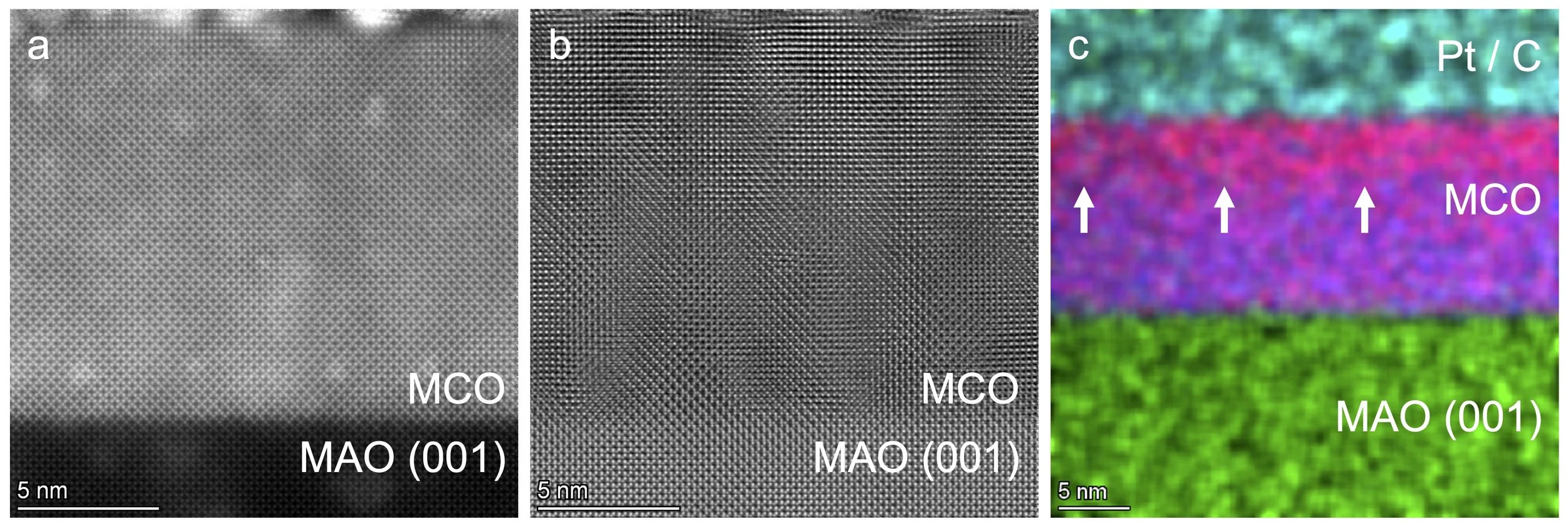Phase Separation Paper Published in JVSTA
Stabilizing phase-pure oxides is challenging due to complex nonequilibrium growth conditions. In our recent paper, led by Miles Blanchet and Ryan Comes at Auburn University, we explore epitaxial growth of MnxCo3-xO4 films, revealing intricate pathways for phase separation through multimodal analysis that will inform precision growth of these materials.
From the abstract:
Transition metal spinel oxides comprised of earth-abundant Mn and Co have long been explored for their use in catalytic reactions and energy storage. However, understanding functional properties can be challenging due to differences in sample preparation and the ultimate structural properties of the materials. Epitaxial thin film synthesis provides a novel means of producing precisely controlled materials to explore the variations reported in the literature. In this work, MnxCo3−xO4 samples from x = 0 to x = 1.28 were synthesized through molecular beam epitaxy and characterized to develop a material properties map as a function of stoichiometry. Films were characterized via in situ x-ray photoelectron spectroscopy, x-ray diffraction, scanning transmission electron microscopy, and polarized K-edge x-ray absorption spectroscopy. Mn cations within this range were found to be octahedrally coordinated, in line with an inverse spinel structure. Samples largely show mixed Mn3+ and Mn4+ character with evidence of phase segregation tendencies with the increasing Mn content and increasing Mn3+ formal charge. Phase segregation may occur due to structural incompatibility between cubic and tetragonal crystal structures associated with Mn4+ and Jahn–Teller active Mn3+ octahedra, respectively. Our results help in explaining the reported differences across samples in these promising materials for renewable energy technologies.
Download the paper from the publisher here.
